Vessels
° Vessels & Rigging ° Clippers ° Steamships ° Lines ° Builders ° Shipwrecks
Rigging
Port and Starboard
Ancient ships had their rudders, or steering boards, on the right side of the stern of the ship. This gave rise to the Anglo-Saxon word steorbord, which means "steer side." When ships came into port to load and unload, they were tied up with their left sides closest to the dock to prevent damage to the rudder. Thus, the left side became known as the port side. Port used to be called larboard, from the Middle English ladeborde, which referred to the loading side of a ship.
Barque (Bark)
The barque has three or more masts, all fully square rigged except for the stern most one, which is fore-and-aft rigged. The rig appeared toward the beginning of the 19th century, but it only became common after 1860. There were barques with up to five masts.
Barque Annie Johnson. Henry Scott, Artist

The wooden three-masted barque was a common sight in the port of San Francisco in the middle of the 19th century (and The typical cargo-carrier of the early 20th century was the four-masted steel barque.
A look through Vessels In Port will give quick indication of how important barques were in California's early development. Until the fast, elegant clippers and huge steamers began arriving in 1850-1851, barques, ships and brigs carried huge cargo loads from around the world, as is exampled by the French barque Maria.
The elegant Japanese ship Kaiwo Maru, pictured above right during a trip into San Francisco Bay, is a four masted-steel barque now used as a training ship for the Japanese Navy. Interesting to note that her seaman wore bright yellow safety helmets, but climbed barefoot.
Barquentine (Barkentine)
A barquentine has three to six masts, all schooner rigged (fore-and-aft), except the foremast, which is square rigged. Apart from an experimental model built in 1803, barquentine rig first appeared in the 1840s. Many barquentines were in fact ships or barques cut down for economy.
Brig (Brigantine)
The brig was an infrequent rig raking to the brig but with a much taller gaff mainsail surmounted by a square topsail and a topgallant carried on a pole mast. Brigs were successful coastal and deep-sea traders during the 18th and 19th centuries. They were able to service smaller ports because of their smaller size.
Hermaphrodite Brigantine
If a ship has two masts, the foremast square rigged and the main mast fore-and-aft rigged, it can be called a hermaphrodite brig or a brigantine. Calling it a brigantine is a bit wrong, because the true brigantine should also have square sails on her main topmast. The brigantine must not, however, have a main course, because then it is called a brig and does not belong to the family of schooners since its main sail is not a fore-and-aft sail. During the 19th Century, brigs were in use because they were smaller than ships or barques and, therefore, were less expensive to operate. The Royal Navy retained some brigs through the 20th century to be utilized as training ships.
Carrack

Specific features of the carrack were its rounded stern, with the planks curving around from the sides to the rudderpost, the forecastle located directly above the stem, with the bowsprit rising from its top. This arrangement had been unaltered since the first "battlements" had been installed on the bow of a sailing warship, and the aftcastle that formed an integral part of the hull.
The carrack (called "nao", for "ship", by the Portuguese) was the definitive beast of burden of the Age of Exploration; Magellan, for example, had an all-carrack fleet with which he set to circumnavigate the globe in 1519. The spacious vessels offered room for a large crew and provisions -- as well as for cargo to be brought back home.
The large superstructures of the carracks, however, affected the use of rigging and thus their sailing characteristics: the towering castles made the ship top-heavy and more prone to topple in strong winds -- what actually happened to Mary Rose in 1545, when burdened with excess load -- that limited the actually usable sail area. The large superstructures also caused wind drag as the ship sailed, and could reduce the wind hitting the courses, or lower sails, i.e. the mainsail and foresail.
Clipper Ships and Clipper Barques
In the past, the term "clipper" was used loosely to cover any ship that had made a fast passage, many of which were designed for a specific trade. Variations were tea clippers, wool clippers, opium clippers, nitrate clippers and Baltimore clippers which were used as blockade runners, privateers and slavers.
Duncan McLean, the marine reporter of the Boston Daily Atlas, wrote around 160 descriptions of ships launched in Boston and elsewhere in New England for the Boston Daily Atlas between April 1850 and March 1857. Of these, 110 concerned clipper ships and the rest were of packets and ordinary merchant ships.
Crothers: The American-Built Clipper Ship, 1850-1856: Characteristics, Construction, and Details
International Marine, Camden, ME, 1997.
Now the term "clipper" is for ships for which plans or models can prove a clipper rating.
Clipper ships ranged in size from a few hundred tons to over 4000. Between one and four hundred were built, depending on which ones you want to count as clipper ships
The Clipper Ship Flying Cloud
Published by Currier and Ives, 1852

Until 1845, cargo was transported in the world's oceans in slow, high-capacity merchant ships: barques, brigs, and ships.
When San Francisco opened up to the world in the late 1840s, even before the Gold Rush, a booming economy ensued and with it a taste for exotics, such as Chinese tea. Shipping rates rose from $10 to $60 a ton. It became profitable to build and operate ships that looked less like cargo carriers and more like racing vessels. Flying Cloud (pictured above), raced the Hornet from New York to San Francisco.
The word "clipper ship" came from the fast little Baltimore Clipper, dating back to the War of 1812. The biggest of these, the Ann McKim, weighed less than 500 tons. But in 1843 it got from New York to Canton, China, and back with a load of tea in only 92 days.
Eastern seaboard ship designers began building clippers as fast as they could; for ten years,tall, elegant clippers ruled the high seas. They reached 14 knots and raced each other from port to port, sometimes with no more than a new suit of clothing as the prize.
Corvette
This small lightly armed warship has been used for coastal patrols since the 1600s. By the 1800s, corvettes reached lengths over 100 feet and ranged from 400 to 600 tons. In the 18th and 19th centuries, corvettes were three-masted ships with square rigging similar to that of frigates and ships of the line, but they carried only about 20 guns on the top deck. Frequently serving as dispatchers among ships of a battle fleet, corvettes also escorted merchantmen and showed a nation’s flag in distant parts of the world. In the early U.S. Navy, corvettes were known as ship sloops, or sloops of war. They fought and on the Great Lakes during the War of 1812.
San Francisco Call, August 9, 1895, San Francisco, California, U.S.A.
ON BOARD THE ZARAGUZA
The Mexican War Vessel the Scene of a Public Reception.
Yesterday afternoon a public reception was held on board of the Mexican war vessel Zaragoza, lying off the oil works, and a large party of visitors enjoyed the graceful and hearty hospitality of Captain Azueta and his brother officers. . . . To exhibit the seamanship of his crew Captain Azueta put them through the naval evolutions of sail drill and sending down the lighter yards. At the order the little Mexican tars ran aloft arid in a short space of time the canvas dropped simultaneously from the yards. The sails were quickly furled and presently the topgallant and royal yards and topgallant masts all came down together on deck with a precision not always found even on crack American and English men-of-war. Prominent among the nimble sailors was the little live-year-old son of the commander . . . The Zaragoza is a French built steel corvette with an armament of six 14-centimeter, or about 5-inch guns, two Nordenfeldt quickfire and two Hotchkiss guns. . . . Captain Manuel Azueta was born in Mexico 33 years ago, and was educated at the naval school in Spain, and has been in the service of the republic 18 years. He is a highly polished gentleman, a thorough sailor and an earnest patriot of the Mexican Republic. The Zaragoza has completed her repairs and will sail for Guaymas to-morrow.
Thee corvette disappeared as a class after the shift to steam.
Dhow
This traditional Arab sailing vessel is rigged with one or more lateen sails (a triangular set on a long yard mounted at an angle on the mast and running in a fore-and-aft direction). They are thought to date back 4000 years for travel from Mediterranean ports to as far as the East coast of Africa, the Red Sea and India. The name is a mystery as it is neither an Arabic or European word. The lateen sail is also shrouded in mystery as they were centered around the Mediterranean for many years.

Dhows date back to the 2nd century. The shape below the waterline was modeled on whales. As used throughout the Arabian Sea, dhows were usually vessels between 150 and 200 tons burden with the stem rising from the water in a long slant. Usually constructed of coconut wood or teak, the hardest and most durable timber, the dhow was entirely seaworthy. Its light bulk allowed it to travel with speed so that it could scud out of the path of threatening weather. Its triangular lateen sail was adapted to catch the slightest breeze and lend the ship maneuverability in treacherous coastal waters. The planks of the dhow were stitched rather than nailed, because nails were not common in Arabia.
Islamic shipwrights ingeniously fastened the planks to one another, and to the keel and ribs, with twisted cord. They caulked the hull with a heavy coat of mixed whale oil and pitch and rendered the vessel sufficiently watertight to keep the hold dry. Even perishable goods could be transported safely. The worth of the dhow is proved by its longevity. In addition, the Arabs knew how to get full value out of their ships. They were experienced in navigation, meteorology and geography, adept at taking advantage of good sailing conditions on a regular seasonal schedule. Their dhows were not usually subjected to the oceanic battering that so often damaged the ships of less skillful navigators, those, for instance, who did not realize when the monsoon was about to change. Arab dhows held a maximum cargo of around 30 tons; a fleet of 100 dhows could have transported the entire harvest up the Red Sea in early days.
European crews may have paled at the thought of sailing to India in a dhow, but Ahmad ibn Majid did not. He regaled his new acquaintances with sagas of the sea as the Arabs had seen it from the rails of their ships as he himself had seen it.
Islamic naval tradition extended to their home waters. Arab warships had coursed the Mediterranean Sea, and one Arab admiral, Tariq ibn Ziyad, had given his name to Gibraltar. The Rock was originally known as Jebel Tariq (meaning "Mount of Tariq") and later was corrupted by usage into Gibraltar. Another Arab admiral, Asad ibn al-Furat, had landed invading armies on Sicily and even on the Italian mainland at the Po River.
But most of all, Ahmad ibn Majid spoke of the Arab conquest of the Indian Ocean. He mentioned the triad of sailors who had pointed the prows of their ships out of the Persian Gulf in the tenth century and helped to blaze the shoreline route to the Indus River: Muhammad ibn Shad-han, Layth ibn Kahlan and Sahl ibn Aban. He referred to bold sea captains who had braved the Indian Ocean along the shortest path to Calicut in Hindustan and then turned author to recount their experiences in writing: Al-Maqdisi, Al-Marwazi and Ahmad ibn Majid. Apprentices of the trade studied everything from star patterns over the Indian Ocean to dockside conditions at Calcutta.
Ibn Majid remarked: "Did you know that we sail beyond Ceylon to China? I myself have made the trip many times, and perhaps I may without immodesty note that I have written a couple of books about it. But our longest tradition of distant voyages links us with the land of the tiger and the elephant."
Ibn Majid read The Wonders of India by Buzurg ibn Shahriyar. It was good advice for the book abounds in dramatic voyages to the subcontinent, in storms and shipwrecks along the way, in the salty lore of the sea. Some critics believe that Ibn Shahriyar may have influenced the anonymous literary genius who first spun the tales of Sinbad the Sailor.
Early in their history, the Arabs living on the littoral of the Indian Ocean and the Arabian Sea had learned that they could make a profit by hazarding their lives on the deep waters beyond their shores. Seafaring families grew rich from transoceanic commerce. Splendid emporiums arose wherever trading ships came to dock Aden, Zanzibar, Madagascar. The dhows carried incense, gold, pearls, glass and ornaments of every variety. They returned with their holds full of perfume, spices, silk, cotton cloth, diamonds and teak wood. There was also a brisk exchange of animals leopards for peacocks, and such.
East Indiaman

Frigates were used as warships or merchant vessels during the 18th and 19th centuries. The length of a frigate was typically between 80 and 104 feet. The great speed of a frigate made it very suitable for warfare, patrolling and blockading. In the second half of the seventeenth century, frigates became larger and no longer required rowers. Frigates had one or two artillery decks and three masts: main, fore and mizzen and between 28 and 50 guns.
Junk
This Chinese sailing vessel was initially developed during the Han Dynasty (200 B.C.E.). China had been sending junks on trading voyages to India and beyond from the 7th century onward as a regular practice.
Under the Ming dynasty, one fleet, said to number more than 60 ships in one account, sailed to India. Within the following 20 years, seven fleets visited various ports, from Aden to the east coast of Africa and, in fact, China was dominating the Indian Ocean at that time. Ocean-going junks appeared top-heavy, yet they were efficient vessels. In March 1848, the Keying sailed up the Thames after crossing the Atlantic via the Cape of Good Hope and New York. Junks were caravel-built, with long and heavy planks fastened to the frames, the body timbers, and to the bulkheads which divided the hull into watertight compartments. With the stern-rudder, dating from the 4th century, the watertight compartments and the number of masts (from two up to five), the junk was far ahead of Western shipping until at least the 15th century.
Junks are still in use in China; approximately 600 junks house an estimated 6,000 people in Hong Kong's Aberdeen Floating Village. At one time, thousands of people lived on the junks full time and, it was reported, that some never touched land.
Ship

A full-rigged ship is square-rigged throughout.
She has three masts with tops, and carries at least three square sails on all three masts. Most also have a small gaff sail on the sternmost mast. Even though most people refer to any large vessel as a "ship," strictly speaking only full-rigged ships are ships.
Text from The Young Sea Officer's Sheet Anchor: Or a Key to the Leading of Rigging and to Practical Seamanship
, Darcy Lever, Dover Press, 1998.
"The Names of the Sails are derived from the Masts to which they are attached; thus the Foresail is named from the Foremast, the Mainsail from the Main Mast, the Main Topsail from the Main Top Mast, &c."

The Fore Sail
The Fore Topsail
The Fore Top-gallant Sail
The Fore Top-gallant Royal
The Fore Studding Sail
The Fore Topmast Studding Sail
The Fore Top gallant Studding Sail
The Mainsail
The Main Topsail The Main Top-gallant Sail
The Main Top-gallant Royal The Main Topmast Studding Sail
The Main Top-gallant Studding Sail
The Mizen Topsail
The Mizen Top-gallant Sail
The Mizen Top-gallant Royal
The Spritsail
The Spritsail Topsail
The Jib
The Fore Topmast Staysail
The Fore Staysail
The Main Staysail
The Main Topmast Staysail
The Middle Staysail
The Main Top-gallant Staysail
The Mizen Staysail
The Mizen Topmast Sail
The Mizen Top-gallant Staysail
The Driver or Spanker and the Mizen brailed up
Schooners

Schooners are a family of ships and must have at least a foremast and an aft-sail and at least two masts -- a foremast and a mainmast. Schooners are the vessels most commonly used today by recreational sailors and are seen at any given time on San Francisco Bay.
Three-masted fore-and-aft schooners were at one time common for trading in the Baltic.
Topsail Schooner: A topsail schooner is similar to a fore-and-aft schooner, but carries topsails and sometimes a topgallant sail on its foremast. has no tops at her foremast, and is fore-and-aft rigged at her mainmast. She differs from a hermaphrodite brig in that she is not properly square-rigged at her foremast, having no top, and carrying a fore-and-aft foresail instead of a square foresail and a spencer. The San Francisco National Maritime Museum's 80-foot Alma, built on the shores of San Francisco Bay in 1891 is a scow schooner: a wide, flat sailing boat with gaff-rigged sails. At the turn of the century, scow schooners moved the kind of heavy cargo that trucks carry today. They crisscrossed the Bay and sailed up into the Delta delivering hay, salt and bricks.
Steamer
The steam engine was first put to practical use in the 18th century as a source for pumping water out of mine shafts. However, such engines were notoriously extravagant on fuel and it was not until the invention of the separate condenser by James Watt (1736-1819) and his later exploitation of the expansive properties of steam that the steam engine began to interest those in water transport. In 1801, William Symington constructed a small single-cylinder double-acting engine of ten horsepower for the stern-wheel steamboat Charlotte Dundas.
At the beginning of the 19th century, a form of beam engine was developed and found acceptance in the United States for river transport and for ocean work.
Development of steam engines included oscillating engines, side-lever engines, geared engines, paddle engines, vertical engines, truck engines, twin-screw engines, etc.
The 1890s marked the zenith of the high-power steam reciprocating engine for express liners, major warships and short-sea mail steamships alike.
Whalers and Whaleboats
Whaleship rigs includes ships, barks, brigs and schooners set up to carry up to 35 men who would process and store materials obtained in the hunt over a period of years. The ships were not necessarily built as whalers, but may have been turned into a whaleship after use for other purposes through the years.
Beginning in the 1830s, whaling ships of British and New England based fleets wintered in San Francisco Bay. A hundred ships or more might be anchored along the San Francisco waterfront, where they stocked up on provisions for their long Pacific and Arctic voyages. In addition to this well-financed pelagic whaling, a small-scale commerce in coastal whales (gray, humpback, orca), hunted from rowboats that went out for the day, developed in several coastal communities, including Carmel, Monterey, Moss Landing, Davenport, Half Moon Bay, and Bolinas. By the mid-1880s, the center of whaling activity had shifted from New Bedford to San Francisco. More than two dozen whaling vessels set out each year from San Francisco's piers, along with numerous schooners in search of seals and otter. With the advent of mechanized whaling in the early 1900s, whalers were able to exploit faster species (blue, fin, sei), and the industry revived for a few decades.
June 17, 1885, Daily Alta California, San Francisco, California, U.S.A.
Profits of Whale Ships.
The profits of some whaling vessels are still very large, despite the fact that many more are engaged in it now than formerly. Some Scotch vessels have paid from 45 to 65 per cent, for the past twenty years. The black whale fishery shows signs of exhaustion as now prosecuted, but the waters between Spitsbergen and Franz Josef Land are declared to be the great black whale fishing grounds of the future, because inexhaustible. The bottle-nose whale fishery is still very successful. Many vessels are fishing for them in Davis Straits and on the coasts of Greenland and Labrador. Only Scotchmen and Norwegians are following this bottle-nose fishery, because Americans have not yet found it out.
Whaleboat builders refined the craft's design, shaping it into a dependable means of getting close enough to a whale for the kill. A whaleship sailed with three to five whaleboats swinging from davits (cranes used on ships). Spares, usually two, were stowed on top of the after house at midship. Whalers had a whaleboat with a crew of six.

Whitehall Boats
Whitehall boats were used to ferry people to and from ships in port, along the waterfront and around San Francisco Bay. The small craft easily went astray: "John T. Carr, G. Conwell and John Kidney, all boys, were arrested last night on a charge of petty larceny. They appropriated a Whiteball boat belonging to W.A. Bender of Third street some days ago and were arrested in the boat. Kidney was bailed out for $300, but the others are still in jail."
On March 4, 1898, the San Francisco Call reported that John Elwert, jailed for deserting the United States steamship Adams. He escaped from the brig on the sloop of war Mohican and swam half way to the wharf when he was picked up by a Whitehall boat and put ashore at Folsom street where he disappeared.
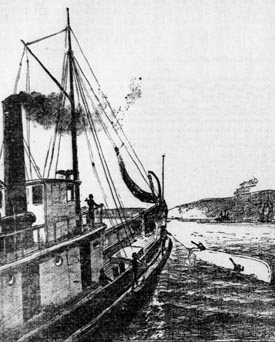 Others were at times stranded due to the Bay's strong wind, weather and tides.
Others were at times stranded due to the Bay's strong wind, weather and tides.
Gus Perata and Dick McDonald drifted around holding onto the bottom of their Whitehall for an hour before the Naval Training Station's Tug Vigilant pulled them out of the water. (Image right from the San Francisco Call, March 10, 1901.)
In 1905, two small boys ages 10 and 12 bought an old Whitehall for $1.25; with three other friends, they set sail on the bay. The tide took over and by nightfall the boys were on a beach in Marin County. After getting safety home the next day . . . by sailing to Black Point, the reporter wrote: "The long, dark night on the Marin shore for the time being has taken all the wanderlust out of a quintet that on Sunday was prepared to make Christopher Columbus look like the captain of a Channel street drawbridge.
Daily Alta California, June 6, 1888, San Francisco, California, U.S.A.
Whitehall Race.
The Whitehall boatmen have arranged a race to take place on Sunday next, each boat to put up $5, the first in to take the total entrance money. The course will be from Fisherman's wharf around Blossom Rock and return. The following have so far entered: Belfast Maid, Faugh-a-Ballagh and the City Front Belle.
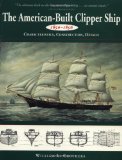








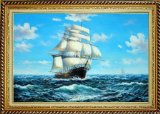



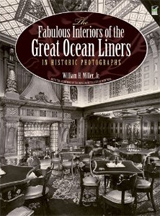
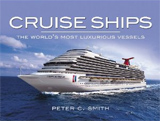





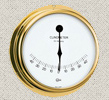
 Copyright ~ 1998-2018.
Copyright ~ 1998-2018. 